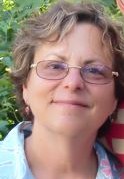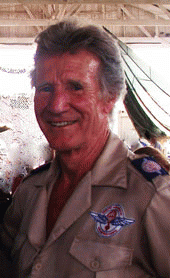Welcome to OpEdNews, Stan. Since 1992, you have been bringing medical teams to under served American communities. Your work has been reported on 60 Minutes and elsewhere. But before that, you were flying your teams into the Amazonian jungle and other Third World areas. Where did you get this idea in the first place?
To answer that question, I can recount a recent breakfast meeting that I had
with the sixth man to walk on the moon: astronaut, Ed Mitchell. We were
in Tucson, Arizona. And he asked me, "Where did Remote Area Medical
begin?" It began when I was a youngster, 17 years of age or so, and I was
working as a vaccaro, or cowboy, on the northern frontier of Brazil in what in
fact used to be the colony of British Guyana in the extreme south of
their country. This is an extremely wild area of tropical savannah surrounded
by rainforest.
I was given a horse to ride - Kang which is a Wapishana word meaning the devil - and Kang had already killed two other cowboys. And so we lassoed Kang in the corral and tied him up to a tree and put on the saddle, blindfolded him, and I climbed on board and we cut him loose. And Kang went bucking across the savannah and had a head-on collision with the side of the corral. I was badly injured, lying underneath him, when the cowboys (all the cowboys were Indians) came running over and pulled me out from underneath Kang and one of them said in Wapishana "Well, the nearest doctor is 26 days on foot from here." And so, that was the time I got the inspiration that we needed to bring those doctors a little bit closer.
And when
I told astronaut Ed Mitchell that story, he said, "Gosh. I was on the
moon, and I was only three days from the nearest doctor." And I said,
"For the people in the northern Amazon, and those people we are now
treating in the United States, they might as well be on the moon for the
opportunity they have to access the health care they need." So, this
organization has its roots in the Amazon and I'm happy to say that we have a
full-time operation down there now. We keep an airplane down there that
flies free air ambulance forthe remote Indian tribes and just had several
teams down there doing cervical cancer treatment and surgeries. However, since
1992, when we started the American program, about 64% of everything we do is
here in the United States.
Was it a difficult decision to make to
switch gears from the Third World to America, the wealthiest country on this
planet?
It wasn't difficult at all, really. Of course, we started out in a very small
way. Overseas, we take small teams and we've worked in Africa, India, the
Dominican Republic, Haiti, and many other places. In fact, one of our
affiliates, RAM Canada, is down in Bolivia, as we speak. But those were always,
and still are, essentially small teams of a dozen people perhaps of various
specialties, traveling by whatever means might be at their disposal: bush
plane, canoe, foot, etc.
So when we started the program here in the United
States, we really started out after we had a request from a very poor county
here in Appalachia that had lost their dentist. We literally put a heavy dental
chair that we borrowed in the back of a pickup truck with a couple of dentists
and the helpers and drove out to the location and fixed some teeth.
And after doing one, we started to get requests for others. Pretty soon we were doing this on a very regular basis. To date we've done 584 of these operations and the equipment has been improved and expanded. And so now we have the capability to go to a place like Los Angeles and set up 100 dental chairs and 20 lanes of eye exam equipment and make brand new eyeglasses on the spot in our mobile labs and various types of medical assistance as well.
So it's grown since 1992 to a very large and significant operation. We've had
over 45,000 volunteers in the field and hundreds of thousands of
patients.
How do you decide where to go and how
often do you shoot off on another expedition?
We had a board meeting here just the day before yesterday and one of the
volunteers, who was doing some research, came up with a figure that we've done
thirteen of these operations since our last board meeting which was in June. So we are doing two or three a month
and sometimes one every week. Which is, of course, a great burden on the volunteers. But, you know, the greatest impediment to what we do here in the United States is
that, for some extraordinary reason I've never been fully able to understand, a doctor, a nurse, a veterinarian duly licensed and qualified in one
state, who's been to regulated standards of their particular medical school,
are not allowed to take that license that they may have earned in one state and
cross state lines or cross the country and provide free care in another state.
Except here in the state of Tennessee, where we changed the law in 1995. So
what happens, of course, is that we're asked to go to - a case in point being
Los Angeles - and we set up all this equipment. We petitioned the State of
California to allow us to bring in volunteers from outside the state to
supplement those who were willing to volunteer who were licensed in California.
(Note: You can view every article as one long page if you sign up as an Advocate Member, or higher).






